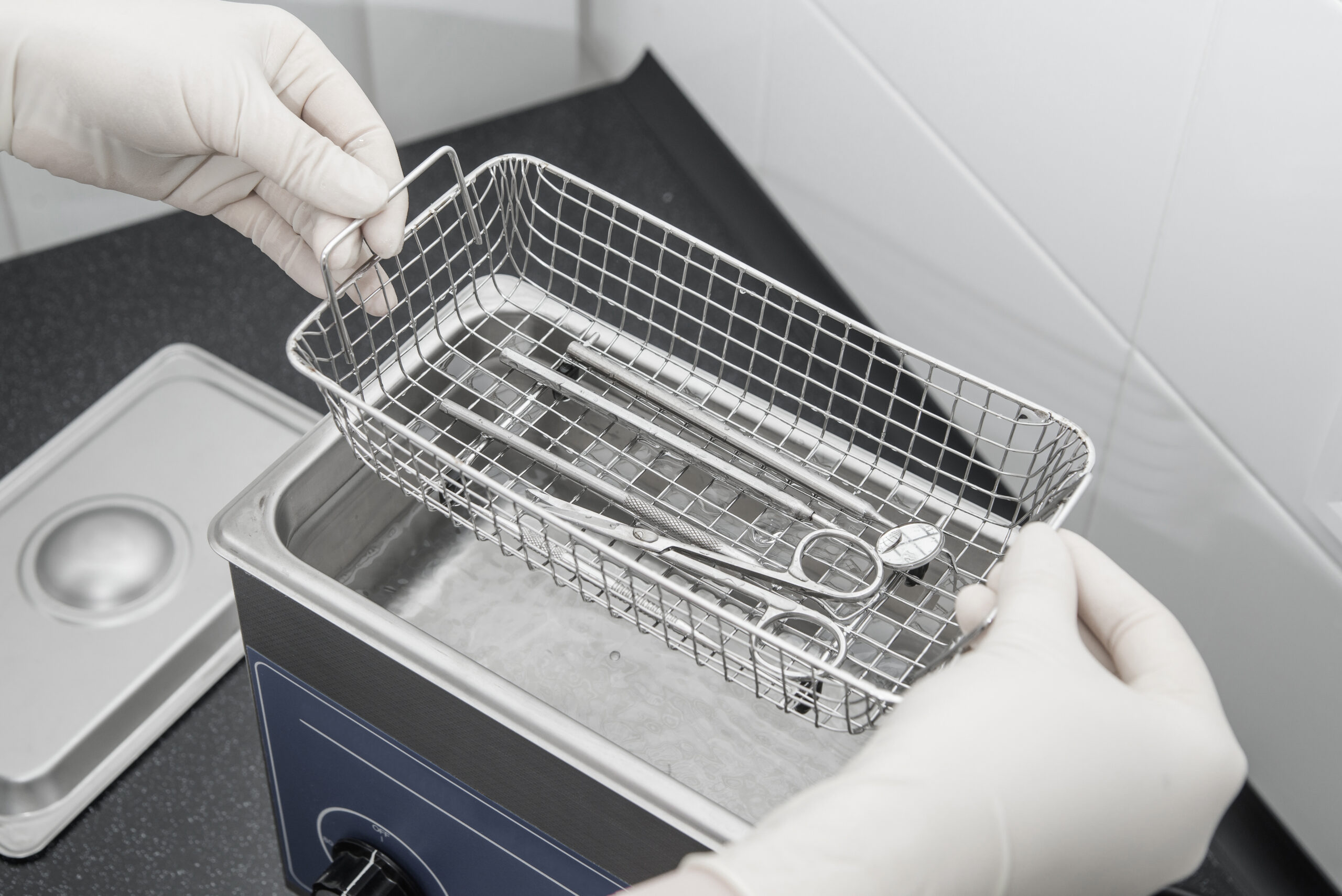Modern medical devices have become critical in supporting patients and creating a suitable environment to provide ongoing care. As surgical theatres, examination rooms, and even waiting areas are regularly exposed to contaminants and bodily fluids, efficient cleaning devices are one of the most essential pieces of equipment in medical facilities for effective disinfection and sterilisation.
Ultrasonic cleaning is now one of the standard methods to keep high-tech medical devices and instruments clean and sterile. In this article, our specialists at Team Medical Supplies will explain how they do this and the benefits of an ultrasonic cleaner.
How Does An Ultrasonic Cleaner Work?
Ultrasonic cleaners are devices that use the ultrasonic process to remove debris and bacteria from surfaces. The method uses mechanical vibrations to stimulate a special-purpose ultrasonic cleaning detergent, and these sound waves produce microscopic implosions. Bubbles then land and collapse on the surfaces of tools inside the cleaner, such as medical devices, which work like a vacuum to scrub the instruments and dislodge soil and debris.
The Benefits Of Using An Ultrasonic Cleaner
Efficiency
Using an ultrasonic cleaner in your workplace is a highly efficient way to reprocess your tools and instruments. Compared to other machine cleaners or hand cleaning, ultrasonic cleaners use fewer materials and offer a faster cleaning method. They use less water and electricity because of their unique cleaning nature while also saving you a great deal of time.
Improved environmental impact
For a long time, the medical industry and many others have used heavy chemical cleaners to thoroughly clean their equipment. Unfortunately, these cleansers can often contain a selection of harmful materials, such as chlorinated hydrocarbons and esters. These compounds can pollute the environment when they enter the groundwater system. Moreover, their vapours are also highly toxic, so when workers use them, it creates a potentially harmful environment upon which they may inhale these toxins.
As ultrasonic cleaners use water-soluble detergents to remove instrument residue, they’re much less harmful and pollute less than their alternatives with harsh chemicals.
Added safety
Ultrasonic cleaners don’t produce chemical fumes as many other cleaning machines do, making it safer for workers operating the cleaner. But that’s only one of the added safety benefits.
When using an ultrasonic cleaner, workers can also avoid direct contact with sharp instruments that may also contain contaminants from their use throughout treatment. In contrast, when workers manually handle these instruments through hand-cleaning, they risk puncturing their skin, causing cuts and possible exposure to a biohazard.
Gentle and delicate cleaning
With precision instruments, such as those with a blade that must remain sharp, cleaning with harsh chemicals can damage the instrument. These items need a thorough cleaning without damage, which means a delicate process like ultrasonic cleaning is ideal. Due to the cavitation method, ultrasonic cleaners provide a gentle cleaning process, allowing the detergent and water mixture to remove debris without force.
Effective and complete cleaning
Traditional cleaning methods are not only more wasteful and dangerous, but they’re less effective than ultrasonic cleaning. When cleaning by hand, for example, the instruments are only cleaned in the areas where the hand can reach, often failing to reach and clean the narrower spaces, leaving the risk of cross-contamination after future uses. The cavitation method allows the liquid and implosions to reach every surface of the instrument and easily removes debris from hard-to-reach places and narrow crevices.
Find High-Quality Ultrasonic Cleaners with Team Medical Supplies
Team Medical Supplies offer various essential medical equipment and products, such as ultrasonic cleaners and other sterilisation items. If you would like to learn more about our selection, please do not hesitate to contact us today by calling 1300 22 44 50 or entering your details within our online enquiry form.

